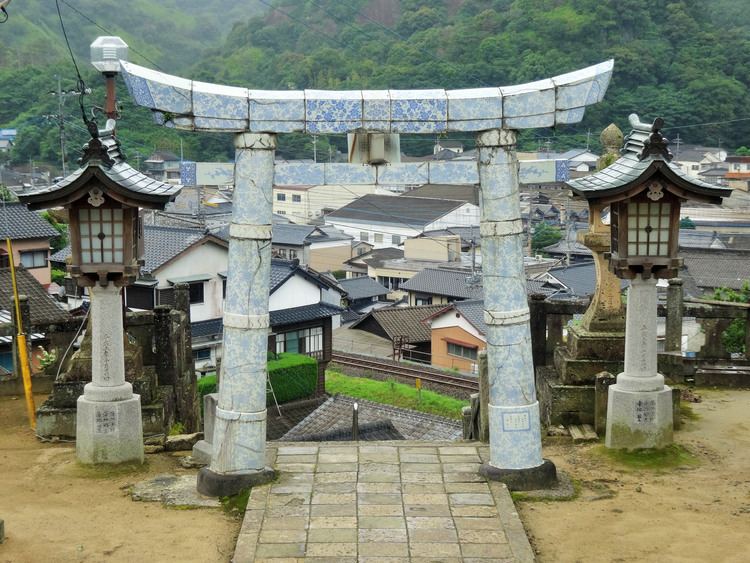Population 21,066 (1 Feb 2009) | Region Kyushu District Nishimatsuura Local time Wednesday 6:34 PM | |
 | ||
Time zone Japan Standard Time (UTC+9) Weather 8°C, Wind S at 11 km/h, 74% Humidity Points of interest Arita Porcelain Park, Tōzan Shrine, China on the Park, Kyushu Ceramic Museum, Hoonji | ||
Arita (有田町, Arita-chō) is a town located in Nishimatsuura District, Saga Prefecture, Japan. It is known for producing Arita porcelain, one of the traditional handicrafts of Japan. It also holds the largest ceramic fair in Western Japan, the Arita Ceramic Fair. This event is held from April 29 to May 5 (Golden Week) every year and has thousands of stores and stalls lining the six-kilometre long main street.
Contents
- Map of Arita Nishimatsuura District Saga Prefecture Japan
- Geography
- Adjoining municipalities
- History
- Twin towns Sister cities
- Prefectural high schools
- Municipal junior high schools
- Municipal elementary schools
- Other schools
- Air
- Rail
- Road
- Sightseeing
- Pottery
- Potters From Arita
- References
Map of Arita, Nishimatsuura District, Saga Prefecture, Japan
On March 1, 2006 the town of Nishiarita, from Nishimatsuura District, was merged into Arita.
Geography
Arita is located in the western part of Saga Prefecture, bordering Nagasaki Prefecture from its southwest to western sides. About 70% of the town is forest and mountains.
Adjoining municipalities
History
Arita was one of the first sites in Japan to produce porcelain, Arita ware. The discovery of porcelain stone is attributed to a Korean potter named Kanagae Sambe, although most historians consider this a legend.
Twin towns — Sister cities
Arita is twinned with:
Prefectural high schools
Municipal junior high schools
Municipal elementary schools
Other schools
Air
There are no airports in Arita. The closest airports are Saga Airport and Nagasaki Airport.
